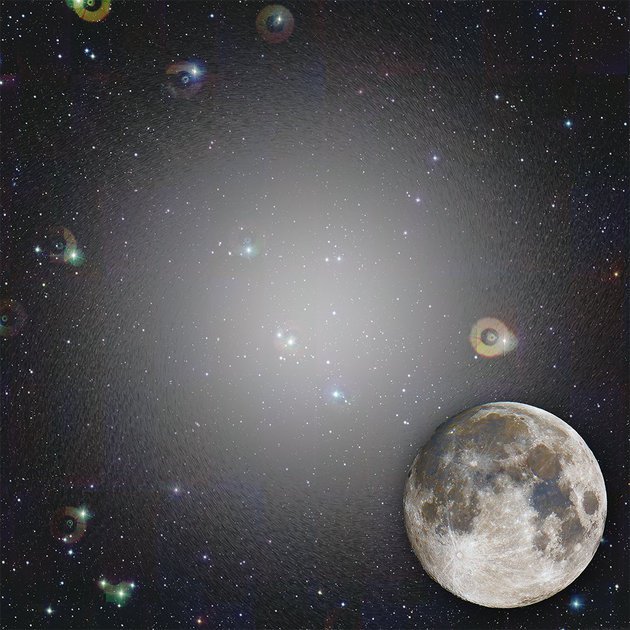A new galaxy has been discovered in orbit around the Milky Way.

What would a newly discovered galaxy look like on our sky, be it 1000 times brighter
Cambridge astronomers have discovered another galaxy orbiting around our Milky Way. The Crater 2 dwarf galaxy, 400,000 light-years from us, has a very low stellar density and is almost invisible. Computer analysis of images of the starry sky helped her to discover it.
Crater 2 was spotted in January when astronomers studied images taken from the Very Large Telescope (VLT) in Chile with the help of a new image processing algorithm. Of the 49 open galaxies moving in orbit around the Milky Way, this was the fourth largest.
Since galaxies do not have clear boundaries, astronomers use so-called to characterize their sizes. effective radius , or half luminosity radius. This is the radius of the part of the galaxy that emits half of the total light emanating from it. The radius of the Crater 2 galaxy was determined to be 3500 light years (the effective radius of the Milky Way is 8800 light years).
')
But Crater 2 has a very low density, and because of this - low brightness. This is one of the darkest galaxies discovered by scientists to date. But over the past 10 years, the number of objects detected in orbit around our galaxy has doubled, which promises us many more wonderful discoveries.
“It is several orders of magnitude less bright than most objects of similar size,” explains Vasily Belokurov, the principal investigator in this work. - She is very scattered, and we believe that she was like that from the very beginning. Why - is still unknown.
The age of the found galaxy is more than 10 billion years. It belongs to the dwarf - one of the most common types in the universe. Some signs indicate that Crater 2 belongs to a whole group of galaxies falling on the Milky Way. “It seems to be aligned with several other objects that are, from an astronomical point of view, not far from it,” comments the work of Jay Pasachoff, an astronomer at Williams College in Massachusetts who did not participate in the study.
But Belokurov and his team are already rushing to use the new recognition algorithm to search for other unknown objects lurking near our galaxy.
The Very Large Telescope is a complex of four separate 8.2-meter optical telescopes combined into one system, built and operated by the European Southern Observatory. It is part of the Paranal Observatory on Cerro Paranal, at an altitude of 2635 m in Chile.
Source: https://habr.com/ru/post/393297/
All Articles